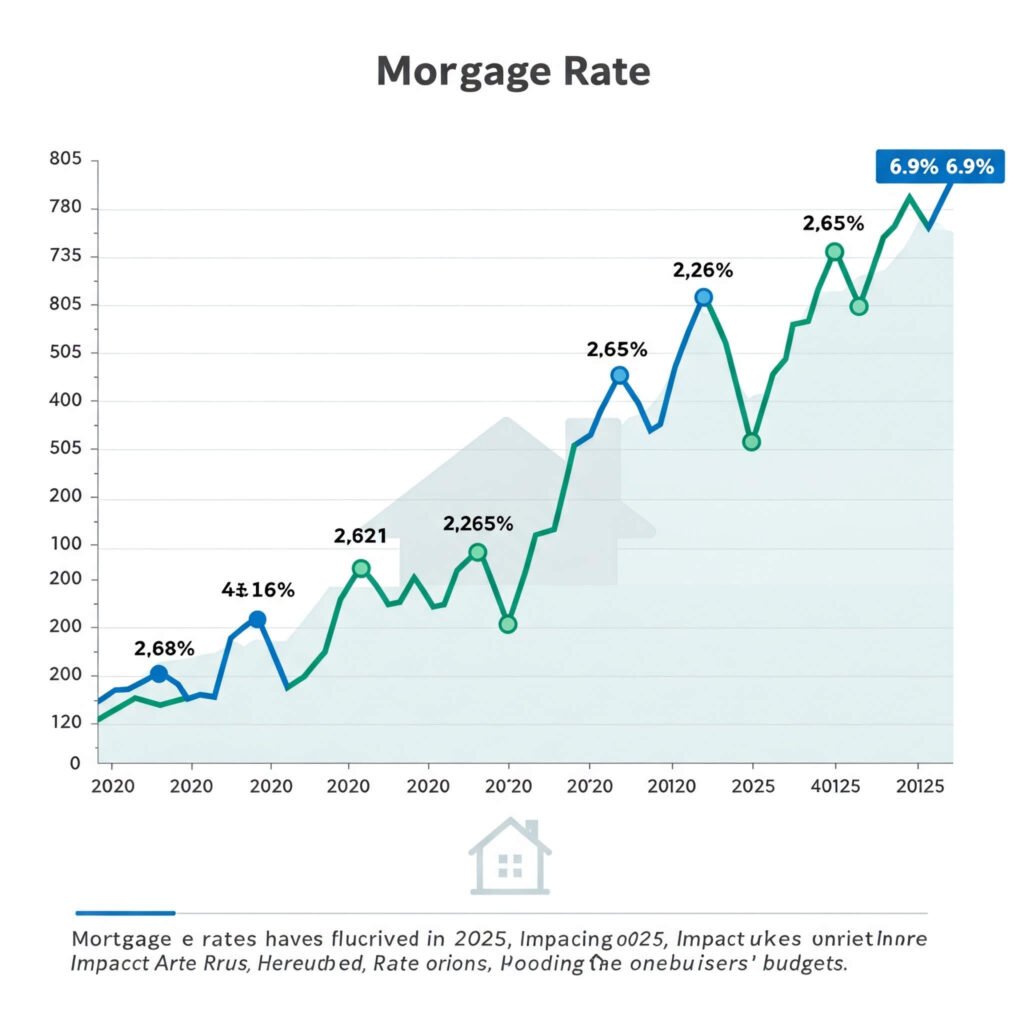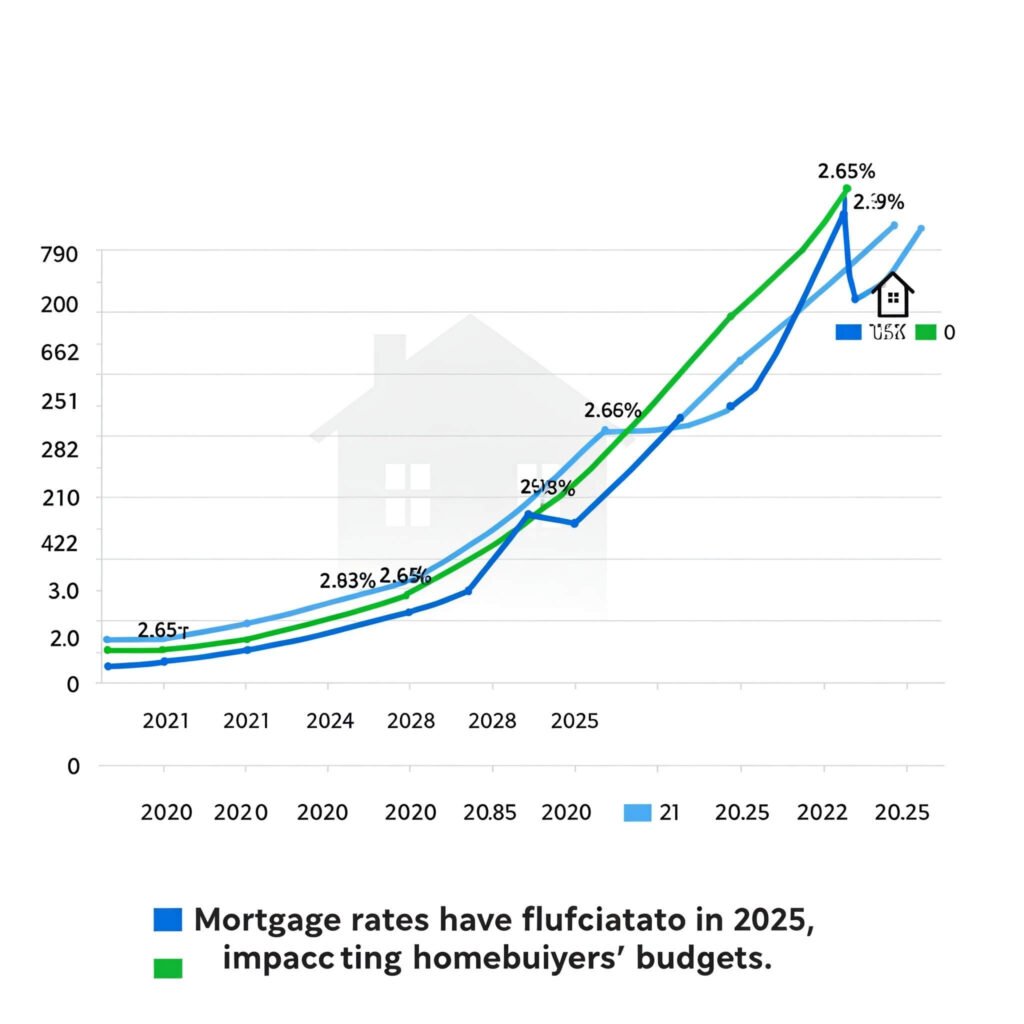Mortgage rate updates are legit making me lose my damn mind, and I’m sitting here in my cramped Chicago apartment, where the radiator’s clanking like it’s tryna start a fight. The housing market in 2025? It’s like playing Uno with a toddler who eats the cards. I was at this sketchy diner in Uptown last week, scrolling X on my busted phone—screen’s cracked to bits—when I saw some rando hyping up a rate spike. Nearly choked on my soggy fries, and the waitress was like, “You good, dude?” Spoiler: I’m not good, ‘cause mortgage rate updates are a total shitshow, and I’m just trying not to blow my last $50.
I’m no real estate bro, okay? Just a guy who’s been dreaming of a house but keeps getting punched in the face by reality. Last year, I tried getting pre-approved for a mortgage, totally fucked up the paperwork, and got rejected so fast I’m still embarrassed. That mess got me hooked on mortgage rate updates, so here’s my raw, kinda sloppy take on what’s going down in the housing market, straight from my wobbly IKEA desk with my dog, Biscuit, snoring like a drunk uncle.
Why Mortgage Rate Updates Feel Like a Trashy Reality Show
Man, mortgage rate updates are giving big drama energy. One day rates are “fine,” the next they’re spiking faster than my anxiety. I was at this dive bar in Wicker Park a couple weeks ago, eavesdropping on some real estate bros (yeah, I’m that loser), and they were freaking out about Fed rate hikes. I spilled my beer all over my jeans trying to Google what that meant. That’s the housing market in 2025: chaotic, confusing, and making me wanna scream into a pillow.
Here’s what’s behind this madness, based on my late-night scrolling and some dumbass moves:
Investors Are Snatching Shit Up: Big companies are buying houses like they’re on sale at Target. Bloomberg said institutional buyers own 20% of homes in some markets. Feels like I’m fighting a losing battle with a stick.
Rates Are Going Up: CNBC said 30-year fixed mortgage rates are around 6.5%, up from last year. I checked my bank app while eating cold tacos and nearly yeeted my phone.
Houses Are Impossible to Find: There’s barely any homes out there, especially in Chicago. Realtor.com said listings are down like 10% from 2024. I saw a “For Sale” sign, got hyped, then saw the price and laughed ‘til I cried.

Housing Market Trends I’m Barely Following
I’m no expert, alright? But I’ve been glued to housing market trends, and some stuff’s sticking out. I was at a coffee shop in Logan Square yesterday, pretending to work but really just refreshing Zillow like a total loser. Here’s what I’m kinda getting:
- Adjustable-Rate Mortgages Are Back: Fixed rates are high, so ARMs are tempting. Forbes said they’re making a comeback, but I tried reading about ‘em and my brain shut down.
- Suburbs Are Popping Off: City prices are insane, so folks are moving out. I visited a buddy in Naperville, saw new houses everywhere, and wished I wasn’t broke as fuck.
- Green Homes Are a Thing: Eco-friendly upgrades are boosting home values. Reuters had a piece on it, but I’m too poor to give a shit.
Mortgage News That’s Fucking Up My Sleep
Mortgage rate updates and housing market news are keeping me up at night. I was walking Biscuit in Humboldt Park the other day, kicking wet leaves, scarf falling apart, stressing about whether I’ll ever afford a place. The wind was freezing my ass off, and I was still thinking about rates. Here’s what’s stuck in my head:
Refinancing’s a Nightmare: With rates climbing, refinancing’s a bad bet. My friend tried and got fucked with worse terms.
The Fed’s Got Me Paranoid: Every time the Fed moves, rates shift. Wall Street Journal said another hike could push mortgages to 7%. I check my phone every time I hear “Fed” on the radio, like a total weirdo.
Homes Cost Too Much: Zillow says median home prices are up 5% from last year. I ran a mortgage calculator and almost threw my laptop out the window.

My Biggest Mortgage Fails (I’m Still Mortified)
Alright, time to get real—my housing market journey’s been a complete trainwreck. Last year, I went to an open house in Pilsen, got so nervous I spilled coffee on the realtor’s shoes, then found out the place was way outta my budget. I’m still dying inside thinking about it. Here’s what I learned from my dumbass moments:
- Ads Are Bullshit: Those “low-rate mortgage!” pop-ups on X? Scams half the time. I clicked one, gave my email, and now I get spam like every damn day.
- Paperwork’s Hell: I fucked up my mortgage application by forgetting a form. Got rejected and felt like the biggest idiot in Chicago.
- Timing’s a Lie: I thought I could wait for rates to drop. Spoiler: They didn’t, and I’m still stuck in this overpriced apartment.
Tips for Not Losing Your Shit Over Mortgage Rate Updates
If mortgage rate updates are stressing you out like they are me, here’s my advice, straight from my sleep-deprived, coffee-fueled brain:
Save Like Crazy: I cut back on takeout to save for a down payment. It sucks ass, but it’s gotta be done.
Check Rates, Don’t Go Insane: I use Bankrate for updates, but I had to stop refreshing at 3 a.m. ‘cause I was dreaming about APRs. Not cool.
Find a Smart Person: My sister in Evanston’s a loan officer, and her tips saved me from a sketchy lender. Find your person who knows their shit.

AWrapping Up This Housing Market Rant
So, yeah, mortgage rate updates and the housing market in 2025 are a wild-ass ride, and I’m just trying not to bawl into my coffee. It’s exciting, scary, and makes me feel like I’m so close but so fucking far from owning a place. My takeaway? Keep learning, don’t trust sketchy ads, and maybe don’t go to open houses with a full coffee cup. If you’re stuck in this housing shitshow too, hit me up on X—I’m @MortgageMess, ranting about my fails and the occasional win. What housing market thing’s got you freaking out for 2025? Slide into my DMs, let’s bitch about it.
Outbound Link: What’s Happening in the Housing Market in 2025




